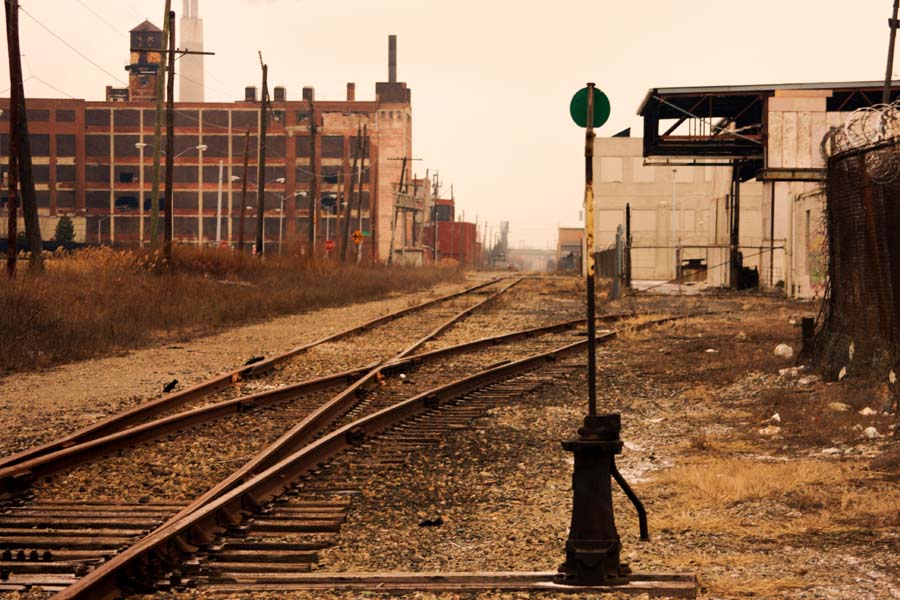Many of us are familiar with images of industrial and residential decay in cities across the world. The scenes are often the same: rows of abandoned, run-down houses. Vacant, crumbling factories, walls covered in graffiti. Littered streets. Public spaces overgrown, unkempt and unloved. These are examples of urban blight, or as it’s also known, urban decay.
The root causes of urban blight
Dictionary definitions suggest urban blight – the decay and deterioration of an urban area – is due to neglect or age. While this is certainly true, it is only part of the story, and the reasons why cities arrive at this point are complex.
A key factor is people leaving an area due to things like a depressed economy, leaving vacant homes to the mercy of the elements and resulting in a once-prosperous district or region becoming run-down.
A port that once bustled with ships may have become unprofitable and closed, hitting the local economy that depended on it. A town whose prosperity revolved around an industry like mining, steelmaking or textiles may go into decline when such activities cease or move away to set up where operating is cheaper.
Examples of urban blight
A famous example of urban decay can be found in Detroit, which in 2013 became the largest US city to file for bankruptcy. The car industry that helped cement the city’s fortunes in the 1930s and ‘40s ran into trouble in the second half of the 20th century. Fuelled further by a combination of poverty, social unrest and a lack of political leadership, several districts across Detroit foundered.
Changes to its manufacturing soul may have contributed to Detroit’s troubles, but there were other factors. As Thomas Sugrue, author of “The Origins of the Urban Crisis: Race and Inequality in Postwar Detroit,” put it: “Detroit is an extreme case of problems that have afflicted every major old industrial city in the US. It’s been 60-plus years of steady disinvestment, depopulation and an intensive hostility between the city, the suburbs and the rest of the state.”
Natural disasters can also play a part in setting a city on a downward path. In 2005, Hurricane Katrina flooded 80% of New Orleans, causing a million residents to lose their homes, many of which were uninhabitable after the disaster. Nearly 20 years on, the city is still recovering, and blight remains an issue.
According to some, in US cities like Detroit, Chicago and Philadelphia, urban blight becomes a contagion. Vacant lots, untended and unkempt, eventually drag down property values, acting as a disincentive to people wanting to live in the area, upending potential investment and dissuading businesses from setting up shop.
As the area drifts, then comes a lack of care, littering, crime and other anti-social behavior. There then follows a sort of domino effect, where the blight spreads. The consequences of this sort of decline are significant.
Responding to the problem
The problem isn’t just in the US. A number of UK cities and towns, particularly those in less economically successful areas, have experienced urban blight. Parts of Glasgow, Liverpool and smaller cities like Hartlepool have suffered at various times over the years.
They feature many things in common: districts where buildings stand empty, waiting for a change of fortune; where housing is run-down and in a poor state of repair; where poverty is rife and job prospects are thin on the ground; where access to education and health services is limited, where local government, squeezed by budget cuts, is unable to make much headway.
Some, like activists Land Is Free, suggest the sort of economic change seen in blighted areas “does not explain why redundant buildings aren’t converted to other uses or pulled down for others to build something new in their place. Nor does it explain why empty sites are left to decay and become a magnet for vandalism and crime.”
The answer, they suggest, lies in changing the tax system to dissuade entities hoarding land “so that it works to discourage the holding of land out of use and encourages regeneration.”
So how have areas like these recovered?
In Detroit, 150 residents were tasked with surveying vacant land across the city that could be used. According to Data-Smart City Solutions, part of Harvard University, around 40,000 properties were found to be blighted and were subsequently given priority for either demolition or remediation.
Additionally, a similar data-driven survey questionnaire approach identified around 38,000 properties that were deemed at risk of urban blight. Detroit’s Blight Removal Task Force recommended further inspection of these properties and a variety of interventions, including rehabilitation, removal and securing them for future use.
In Chicago, empty lots were sold off for just a dollar to local residents and organizations who would then spruce them up; in Philadelphia, meanwhile, locals were encouraged to landscape vacant plots of land, a practice which appears to “significantly curb gun crime, boost property values and even aid residents’ health.”
In Baltimore, the local government has worked on an analytical project with researchers from Johns Hopkins University to determine the scale of the problem of urban blight across the city and find solutions.
Among the goals of the Baltimore study was determining the steps local politicians needed to take to alleviate the problem, which included selling its properties, issuing citations or creating affordable housing options.
Urban blight recovery and regeneration
Recovery from urban blight is a slow process. Empowering local people to tackle the problem is a big step toward solving the problem. Commitment from local and central government is vital, as is accumulating the best possible data to understand the scale of the problem and determine a solution that will work best.
The involvement of practitioners across the built environment is another consideration.
Academics at Michigan State University in the US have coined the phrase “domicology” to describe their study of the lifecycles of the built environment, examining the path it takes from planning, design and construction through to the end of use, abandonment, deconstruction or reuse of structures.
Writing in “The Conversation,” the academic team says domicology recognizes the cyclical nature of the built environment: “Ultimately we’re imagining a world where no building has to be demolished. Structures will be designed [and delivered] with the idea that once they reach the end of their usefulness, they can be deconstructed with the valuable components repurposed or recycled.”
The team adds that “governments can help by putting in place policies, incentives and regulations to prevent abandonment and facilitate removal … [and] as these ideas take hold and spread through planning, design, financing and construction industries, the goal is to prevent another blight epidemic like the one we see today in Detroit.”











